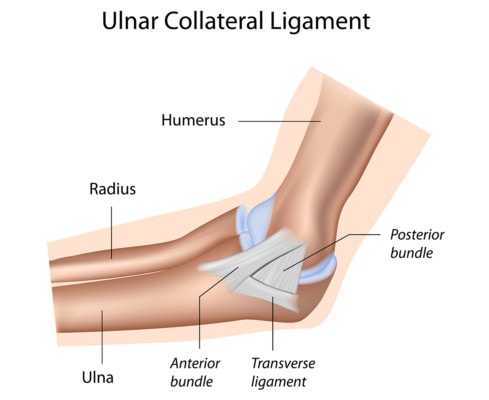Tommy John Surgery Alternatives: Why are So Many Baseball Players “Striking Out” when They try to Avoid Elbow Surgery with PRP?

Alila Medical Media/Shutterstock
Are there Tommy John Surgery alternatives available to professional baseball players? Well an interesting article this morning on the Sports Illustrated web-site suggests that one of the new mainstays thought to help players avoid Tommy John Surgery may be striking out. The gist is that pitchers and other players have turned to Platelet Rich Plasma (PRP) therapy to treat UCL (ulnar collateral ligament) injuries and to try and avoid Tommy John Surgery (UCL reconstruction with a tendon taken from elsewhere in the body). To review, throwing athletes stress the UCL with each throw. Recent research has shown that if we just paid attention to bio mechanics, we’d realize that many of these baseball players are stressing the UCL because they have poor shoulder range of motion. However, once the UCL is torn, many players would rather avoid invasive surgical reconstruction as they’re out for the rest of the season. Platelet rich plasma injections can help stimulate healing through the release of growth factors, so this seemed like a good alternative. The article points out that many baseball players are failing this promising new therapy. So why is this happening? We’ve had good success with using PRP to treat baseball UCL injuries, so this makes no sense to me. First, as I’ve discussed before, all PRP isn’t created equal. The low platelet counts and red and white blood cell contamination present in most PRP mixes used by doctors can reduce the effectiveness of PRP based on our lab tests. So many of these guys that should be getting injected with the Dom Perignon of PRP are actually being injected with the Budweiser of PRP. Second, if the UCL tear is more severe, in our clinical experience it needs to be treated with the patient’s own stem cells. However, many providers only have PRP at their disposal, so everything gets PRP. In addition, the UCL tear may be severe enough where same day stem cell procedures may be too much and only cultured stem cells are the answer. Even fewer providers can offer access to both. Finally, the tear may be severe enough that only surgery will help. Are there other issues? Yes. For example, few sports orthopedists have access to ultrasound and understand how to use this technology. This helps both on diagnosis and in treatment. On the diagnostic side, unlike an MRI, you can stress the patient’s elbow and easily observe if the UCL has hidden tears or weak areas. On the treatment side, rather than a blind injection somewhere in the vicinity of the UCL, you can target specific weak areas of the ligament. The upshot? I think many of these players are failing PRP because the PRP mix itself is sub optimal, some really need stem cell injections because of the severity of their tear, and oftentimes ultrasound diagnosis and injection techniques aren’t used.

If you have questions or comments about this blog post, please email us at [email protected]
NOTE: This blog post provides general information to help the reader better understand regenerative medicine, musculoskeletal health, and related subjects. All content provided in this blog, website, or any linked materials, including text, graphics, images, patient profiles, outcomes, and information, are not intended and should not be considered or used as a substitute for medical advice, diagnosis, or treatment. Please always consult with a professional and certified healthcare provider to discuss if a treatment is right for you.
